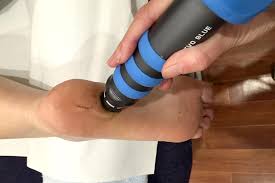100 POINT WEEKLY RECOVERY CHECKLIST
In this day and age, there are numerous ways to plan and record your training – training diary, Strava or spreadsheet to name just a few. Keeping a training diary, in whatever form, allows you to monitor your workload and compare times and performances from previous years. This data can then help you plan your training into the future.
To maximize performance, athletes require a delicate balance between training stress and recovery. Without adequate recovery, an athlete will not achieve his or her full performance potential due to the accumulation of progressive fatigue, often termed overtraining syndrome. Therefore, optimizing recovery is an essential component of the overall training plan.
That’s where the 100-point weekly recovery checklist comes in.This checklist was developed for the Indonesian Olympic Team to use during preparation for the Beijing Olympic Games, and since modified by Sommet Recovery Systems with the latest recovery modalities.
To reduce the stress/fatigue state and to optimize recovery, the elite athletes were encouraged to achieve 100 points on the weekly recovery checklist. The athletes were encouraged to select two or more daily recovery strategies (Table 1), with strategies from each recovery focus area used at some point during the week. Checklist instructions are outlined in Table 2. This 100-point target can also be modified depending on the stage of training. For example, when in really heavy base training, you may wish to aim for 120 points of recovery, as opposed to the off season when you may only require 60 points or so.
Discuss these strategies with you coach and work out the best ways to implement them into your weekly program. For more information please contact Sommet Recovery Systems on support@sommetrecovery.com.au
Table 1. Recovery Strategies, Descriptions and Points Value
| RECOVERY STRATEGY | DESCRIPTION | RECOVERY POINTS |
| Compression Garments | Worn during travel / awake
Worn during sleep |
10 points
15 points |
| Compression Boots | 30 minutes usage | 10 points |
| Contrast Water Therapy
(Hot/Cold Shower) |
Alternate 1 min hot/30 secs cold, repeated 10 times | 10 points |
| Hydrotherapy
(Pool Recovery Session) |
Alternate Swim Strokes / pool running/Stretching (20 mins) | 10 points |
| Hydrotherapy | Salt water therapy at beach (20 mins) | 10 points |
| Hydration Monitoring | Fluid ingestion 1.5l per kg lost in bodyweight during training | 5 points |
| Massage and Manipulation | Deep tissue massage
Roller, massage ball, massage gun |
15 points
10 points |
| Stretching and mobility | Post workout and on easy days | 5 points |
| Nutritional Supplementation | Pre/during/post session nutrient ingestion | 5 points |
| 8 hours good sleep | Points for each day | 5 points |
| Infrared Therapy | Use of infrared sauna
Localised infrared light |
10 points
5 points |
| Yoga / Pilates | Easy session 30 minutes | 10 points |
| Cryotherapy | 10 minutes in Ice Tub | 10 points |
| EMS (Electrical Muscle Stimulation) | 15 minutes | 10 points |
Table 2. Checklist Instructions
| Every time you use a recovery activity, the allocated points are added to your weekly total |
| Use two or more recovery activities daily |
| Strategies for each recovery focus area must be used during the week. |
| Write your daily recovery points in your training diary. |
| Your goal is to achieve 100 weekly recovery points |
References
- 1. Robson-Ansley PJ, Gleeson M, Ansley L. Fatigue management in the preparation of Olympic athletes. J Sports Sci. 2009;1-12









